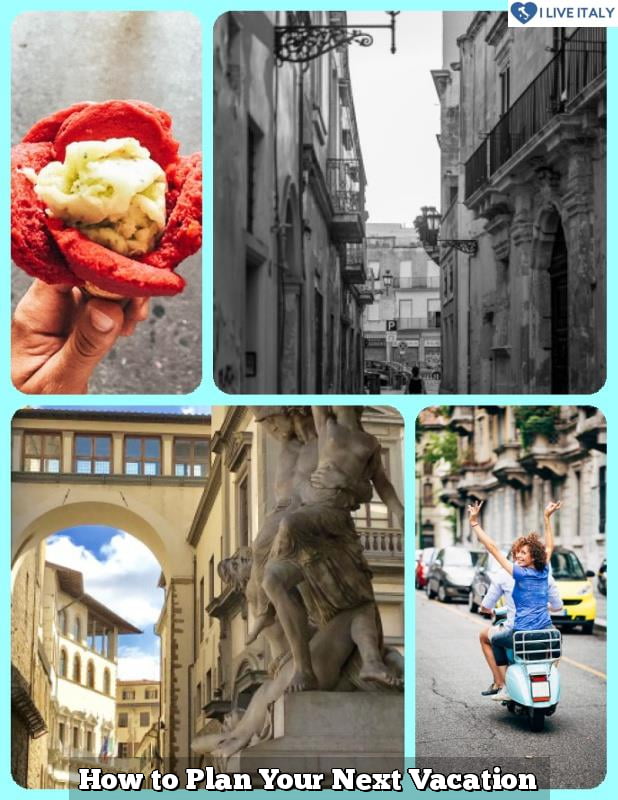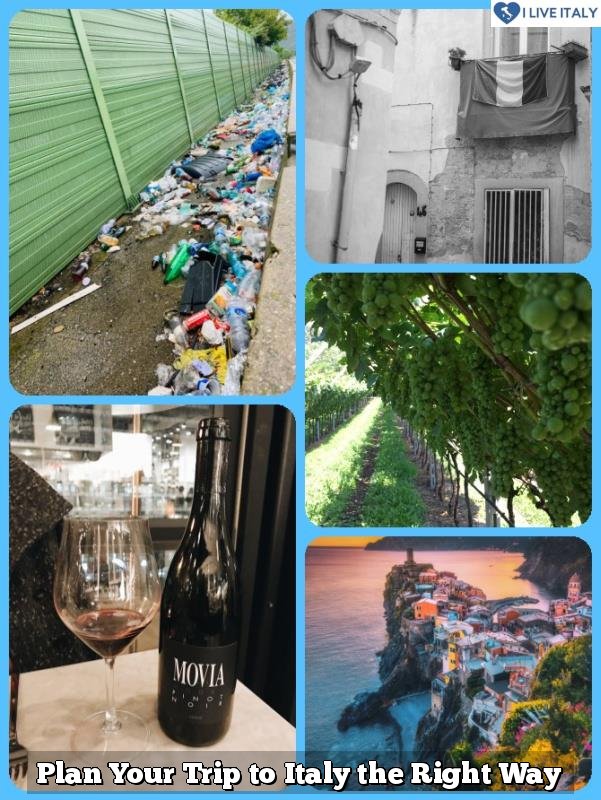Italy, known for its rich history, stunning landscapes, and delectable cuisine, is a dream destination for travelers around the world. Whether you’re drawn to the iconic landmarks of Rome, the artistic treasures of Florence, or the romantic canals of Venice, Italy offers a diverse range of experiences for every type of traveler.
Planning an Italy traveling plan requires careful consideration of the best time to visit, top destinations to explore, transportation options, accommodation choices, culinary delights to savor, cultural experiences to immerse in, budget tips to save money while still enjoying all that Italy has to offer, and essential items to pack for your trip.
When it comes to visiting Italy, timing is crucial. The ideal seasons to visit are typically spring (April to June) and fall (September to October) when the weather is mild and tourist crowds are fewer compared to peak summer months.
During these times, you can enjoy pleasant temperatures for sightseeing and experiencing the local culture without feeling overwhelmed by masses of tourists. Each season brings its own charm and unique attractions in Italy, so planning your trip according to your preferences is key.
Italy boasts an array of must-visit destinations that showcase its beauty and heritage. From exploring ancient ruins in Rome to wandering through Renaissance art galleries in Florence and cruising along picturesque canals in Venice, each city offers a distinct flavor of Italian charm.
Don’t miss out on Tuscany’s rolling vineyards and hilltop villages that epitomize the quintessential Italian countryside experience. Regardless of where your travels take you in Italy, be prepared to be enchanted by its history, culture, and warm hospitality at every turn.
Best Time to Visit Italy
When planning your Italy traveling plan, one of the key considerations is the best time to visit this beautiful country. Italy experiences a diverse climate across its regions, so choosing the right season can enhance your experience and enjoyment of the trip.
Here are some factors to consider when deciding on the ideal time to visit Italy:
- Weather: The weather in Italy varies from north to south and east to west. Generally, the best time to visit is during the spring (April to June) and fall (September to October) when temperatures are mild, crowds are smaller, and prices are more reasonable.
- Festivals and Events: Italy hosts numerous festivals and events throughout the year that showcase its culture, traditions, and history. From Carnevale in Venice to the Palio horse race in Siena, experiencing these cultural celebrations can add an extra layer of excitement to your trip.
- Sightseeing Opportunities: Summer is a popular time for tourists due to sunny weather and longer daylight hours. However, this also means larger crowds at popular tourist attractions like the Colosseum in Rome or St. Mark’s Basilica in Venice. Shoulder seasons offer a better balance of pleasant weather and fewer tourists for a more relaxed sightseeing experience.
Ultimately, the best time to visit Italy depends on your preferences, interests, and travel goals. Whether you choose to explore bustling cities like Rome or Florence in peak tourist season or savor a peaceful countryside retreat in Tuscany during off-peak months, each season offers unique opportunities for unforgettable experiences in this enchanting country.
Top Destinations in Italy
Italy is a country rich in history, art, and culture, offering visitors a diverse range of experiences to explore. From the historic ruins of Rome to the picturesque canals of Venice, Italy has something for everyone. Whether you are interested in ancient architecture, world-class art collections, or simply relaxing in the idyllic countryside, Italy has it all. Planning an Italy traveling plan involves selecting the best destinations to visit that cater to your interests and preferences.
Rome: The Eternal City
Rome, the capital city of Italy, is a must-visit destination for travelers seeking to immerse themselves in history and culture. With iconic landmarks such as the Colosseum, Roman Forum, and Vatican City, Rome offers a mix of ancient ruins and modern attractions. Visitors can stroll through the cobblestone streets of the historic center, toss a coin into the Trevi Fountain for good luck, or indulge in authentic Italian cuisine at local trattorias.
Florence: The Birthplace of the Renaissance
Florence is renowned for its rich artistic heritage and stunning architecture. Home to masterpieces by Michelangelo, Leonardo da Vinci, and Botticelli, Florence boasts world-class museums such as the Uffizi Gallery and Galleria dell’Accademia. Travelers can admire art treasures like Michelangelo’s David statue, explore the magnificent Duomo Cathedral, or wander through charming piazzas lined with artisan shops. Tuscany’s rolling hills & vineyards are also nearby.
Venetian Charm
Venice is a unique city built on waterways that captivate visitors with its romantic ambiance and distinctive architecture. Travelers can take a gondola ride along the serene canals, visit iconic landmarks like St. Mark’s Basilica and Doge’s Palace or attend traditional events like Carnevale di Venezia (Carnival of Venice). Venice’s islands like Murano & Burano offer tourists fascinating experiences such as glassblowing demonstrations and picturesque colorful houses respectively.
Traveling to Tuscany gives you access to stunning landscapes dotted with medieval hilltop towns such as Siena & San Gimignano as well as vineyards producing renowned wines like Chianti Classico. Additionally Cinque Terre boasts five scenic villages perched on cliffs overlooking dazzling blue waters providing unforgettable views suitable for hiking enthusiasts or lovers craving coastal beauty within their Italy traveling plan.
Transportation in Italy
Traveling around Italy is an exciting part of any Italy traveling plan, as the country offers a variety of transportation options to explore its beautiful cities and picturesque countryside. Whether you prefer the convenience of trains, the flexibility of buses, or the freedom of renting a car, there are several ways to navigate Italy’s diverse landscapes.
Trains
One of the most popular and efficient modes of transportation in Italy is the extensive train network that connects major cities and smaller towns. The high-speed trains like Frecciarossa are ideal for long-distance travels between cities like Rome, Florence, Venice, and Milan. Travelers can also opt for regional trains to explore off-the-beaten-path destinations at a more leisurely pace.
Buses
For travelers looking to connect smaller towns or explore rural areas in Italy, buses are a convenient option. Companies like FlixBus and MarinoBus offer affordable bus services that run regularly between popular tourist destinations. Bus travel allows visitors to enjoy scenic views along the way while making stops in charming villages or vineyards.
Renting a Car
Renting a car in Italy provides ultimate freedom and flexibility to create your own itinerary and explore remote locations at your own pace. While driving in major cities like Rome or Florence can be challenging due to narrow streets and limited parking, having a car is perfect for venturing into the countryside or coastal regions where public transportation may be limited.
Visitors should note that Italian drivers can be assertive, so it’s essential to familiarize yourself with local traffic rules before hitting the road.
Accommodation
When planning your Italy traveling plan, one of the key considerations is where you will stay during your trip. Italy offers a wide range of accommodation options to suit every budget and preference. From luxurious hotels in the heart of major cities to quaint bed and breakfasts nestled in the countryside, there is something for everyone in this charming country.
To help you make the most of your stay in Italy, here are some different types of accommodations you can consider:
- Luxury Hotels: Italy is home to some of the world’s most exquisite luxury hotels, offering top-notch amenities, impeccable service, and stunning views. Whether you want to indulge in a pampering spa experience or enjoy a rooftop cocktail overlooking iconic landmarks, luxury hotels in Italy will exceed your expectations.
- Budget-Friendly Options: If you’re looking to save money on accommodations during your Italy traveling plan, there are plenty of budget-friendly options available. Hostels, guesthouses, and Airbnb rentals offer affordable yet comfortable stays in prime locations across the country.
- Historic Villas and Palaces: For a truly unforgettable experience, consider staying in a historic villa or palace during your trip to Italy. These unique accommodations provide a glimpse into the country’s rich past while offering modern comforts and personalized service.
No matter where you choose to stay in Italy, each accommodation option offers its own charm and character that adds to the overall experience of exploring this beautiful country. Whether you prefer grandeur and opulence or simplicity and authenticity, there is a perfect place for you to rest your head after a day of sightseeing and indulging in delicious Italian cuisine.
Food and Dining
Italy is not only renowned for its stunning architecture, rich history, and beautiful landscapes but also for its delectable cuisine. When embarking on an Italy traveling plan, exploring the food scene is a must to truly immerse oneself in the culture of the country. Italian cuisine varies from region to region, offering a diverse array of flavors and specialties that cater to every palate.
One cannot visit Italy without indulging in traditional dishes like pasta carbonara, pizza margherita, gelato, and risotto. Each region boasts its own culinary gems, such as the seafood-rich dishes of Sicily or the hearty meat-based meals of Tuscany. Whether dining at a Michelin-starred restaurant or enjoying street food from a local vendor, the quality and freshness of ingredients are always at the forefront of Italian cooking.
In addition to trying classic dishes, partaking in wine tastings is another essential component of experiencing Italian gastronomy. Italy is known for producing some of the finest wines globally, including Chianti from Tuscany, Barolo from Piedmont, and Prosecco from Veneto. Pairing regional dishes with local wines enhances the overall dining experience and provides insight into the country’s rich winemaking heritage.
| Italian Dish | Region |
|---|---|
| Pasta Carbonara | Lazio |
| Pizza Margherita | Naples |
| Gelato | Florence |
| Risotto | Lombardy |
Cultural Experiences
Italy is a country rich in cultural experiences that offer travelers a glimpse into its storied past and vibrant present. When planning your Italy traveling plan, be sure to include activities like visiting museums, attending concerts, and exploring local markets to immerse yourself in the essence of this captivating destination.
Museums in Italy are renowned for their impressive collections of art, history, and artifacts. From the iconic Vatican Museums in Rome to the Uffizi Gallery in Florence, you can witness masterpieces by some of the world’s greatest artists.
In addition to museums, attending concerts can be a magical way to experience Italy’s cultural heritage. Whether you opt for an opera performance in Milan’s famous La Scala theater or a classical music concert in Venice, the musical traditions of Italy are sure to leave you spellbound.
Furthermore, exploring local markets is a fantastic way to discover the culinary delights and unique crafts of each region. From Mercato di San Lorenzo in Florence to Rialto Market in Venice, you can sample authentic Italian delicacies and purchase handcrafted souvenirs to cherish from your trip.
To truly make the most of your Italy traveling plan, consider taking part in guided tours or workshops that offer insights into Italian culture and traditions. Whether it’s learning how to make fresh pasta from a local chef or joining a historical walking tour through ancient ruins, these experiences will enrich your journey and create lasting memories.
By embracing cultural activities during your visit to Italy, you’ll gain a deeper appreciation for this enchanting country and its distinctive way of life.
| Cultural Experiences | Highlights |
|---|---|
| Visiting Museums | The Vatican Museums in Rome showcase art treasures |
| Attending Concerts | Experience opera performances at La Scala theater in Milan |
| Exploring Local Markets | Savor authentic Italian delicacies at Rialto Market in Venice |
Budget Tips
When planning your Italy traveling plan on a budget, there are several strategies you can implement to make the most of your experience without breaking the bank. One key tip is to travel during the shoulder seasons, which fall between April to June and September to October. During these times, you can still enjoy pleasant weather and fewer crowds, allowing you to save on accommodation costs and avoid long lines at popular tourist attractions.
In addition, consider exploring lesser-known destinations in Italy that offer unique experiences at more affordable prices compared to major cities like Rome or Venice. Places like Bologna, Matera, or Lecce provide rich cultural heritage, stunning architecture, and delicious cuisine without the hefty price tags often found in tourist hotspots. You may discover hidden gems off the beaten path while also supporting local businesses.
Another budget-friendly tip for your Italy traveling plan is to take advantage of public transportation options such as trains and buses instead of renting a car. Not only is it more economical, but it also allows you to immerse yourself in the local culture and get a glimpse of everyday life in Italy.
Consider purchasing regional train passes or using apps for booking bus tickets in advance to save money and time during your travels across this captivating country. By being mindful of your spending and making conscious choices, you can create unforgettable memories without compromising your budget while exploring all that Italy has to offer.
Packing Essentials
When embarking on an Italy traveling plan, it’s essential to make sure you pack the right essentials for your trip. Italy is a country known for its diverse landscapes, rich history, and vibrant culture, so being prepared will ensure you have a smooth and enjoyable experience exploring all that this beautiful country has to offer.
First and foremost, when planning your packing list for Italy, consider the time of year you’ll be visiting. The weather can vary greatly depending on the season and region, so packing versatile clothing options is key. Lightweight layers are ideal for warmer months while a jacket or sweater may be necessary during cooler seasons. Comfortable walking shoes are also a must-have for exploring cobblestone streets and historic sites.
In addition to clothing, don’t forget essential travel gadgets such as a universal adapter for charging your devices, a portable charger to keep your phone powered up while out sightseeing, and a camera to capture memories of your journey through Italy.
Other important items to include on your packing list are travel accessories like a sturdy backpack or daypack for carrying essentials while exploring, sunscreen to protect your skin from the sun’s rays, and a reusable water bottle to stay hydrated throughout the day.
By being well-prepared with these essential items in your luggage, you’ll be ready to fully enjoy all that Italy has to offer during your travels.
Frequently Asked Questions
What Is the Best Way to Plan a Trip to Italy?
The best way to plan a trip to Italy is to start by researching the destination thoroughly. Consider which cities you want to visit, the best time of year to go, and what activities are a must for you.
Develop a tentative itinerary that includes travel logistics like transportation and accommodation. Make sure to leave room for spontaneity and unexpected discoveries along the way.
How Many Days Are Enough for Italy?
The number of days needed for a trip to Italy really depends on how much you want to see and experience in the country. A week-long trip could be enough to visit major cities like Rome, Florence, and Venice, but ideally, two weeks or more would allow for a more leisurely exploration of Italy’s diverse regions.
Remember that each city has its own unique charm and attractions worth exploring.
What I Wish I Knew Before Going to Italy?
Before going to Italy, I wish I had known more about the local customs and etiquette. Understanding basic Italian phrases would have been helpful, as well as familiarizing myself with the tipping culture in restaurants and cafes. Additionally, knowing about common scams targeting tourists would have prepared me better for a smoother travel experience in Italy.

I’m a passionate traveler, writer, and Italophile. My fascination with Italy’s history, art, and culture has led me on countless adventures across the Italian landscape. Through “I Live Italy,” I share my love for this extraordinary country and aims to inspire others to explore its boundless beauty.




